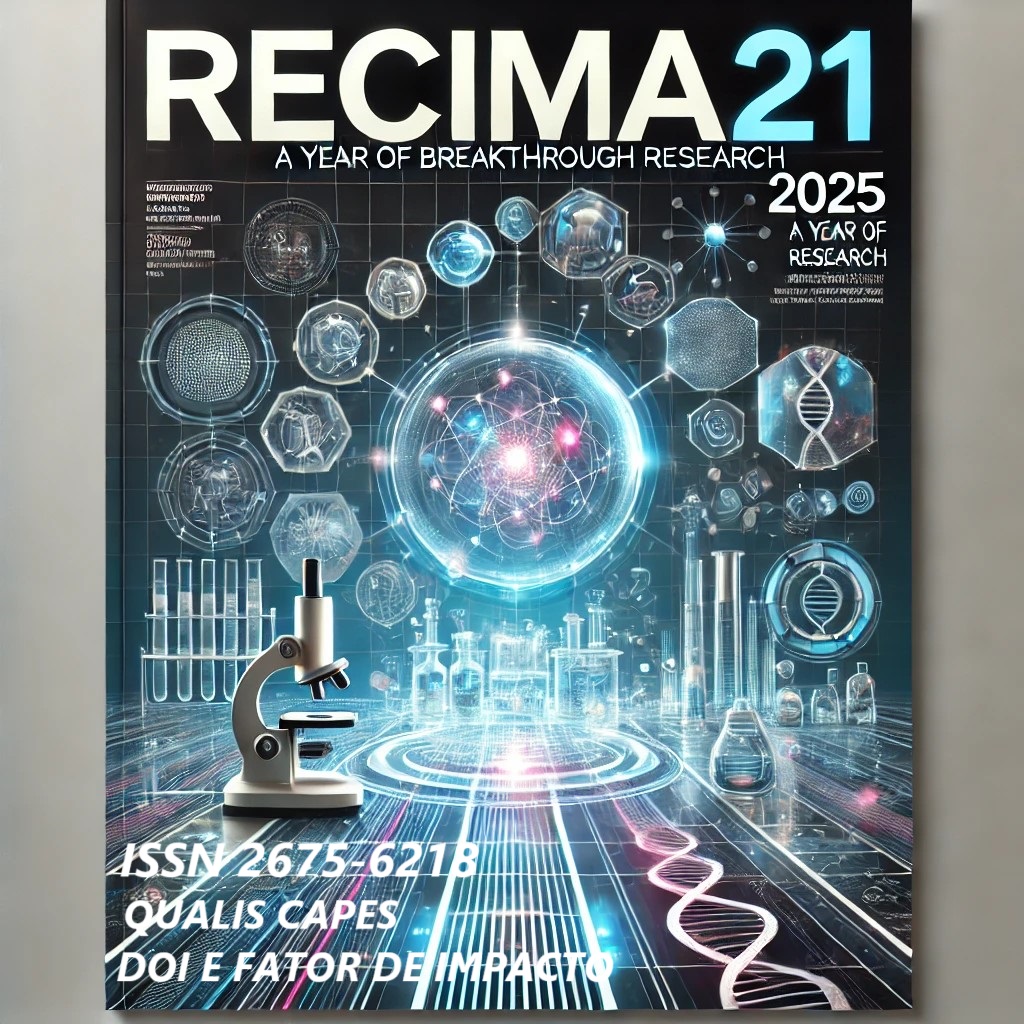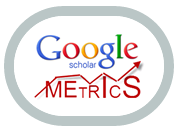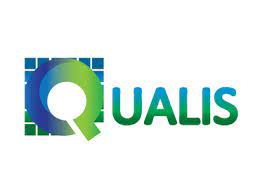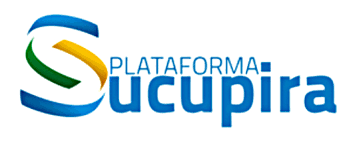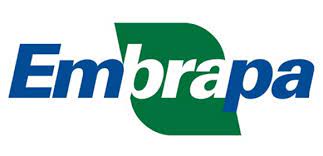A IMPORTÂNCIA DO ALEITAMENTO MATERNO: O QUE REVELAM AS EVIDÊNCIAS CIENTÍFICAS?
DOI:
https://doi.org/10.47820/recima21.v6i4.6359Palavras-chave:
aleitamento materno, saúde infantil, políticas públicas, crescimento linearResumo
A amamentação é o processo de alimentar um bebê com leite materno, que é considerado o padrão normativo para a alimentação e nutrição infantil. A pesquisa foi realizada no período de março de 2024 a dezembro de 2024, utilizando-se os descritores em ciências da saúde (DeCS): "aleitamento materno" AND "saúde infantil" AND "políticas públicas"; "hábitos alimentares saudáveis" OR "crescimento linear"; "educação alimentar" AND "peso corporal" nas bases de dados Google Acadêmico, Scientific Electronic Library Online (SciELO) e PubMED. A continuidade da pesquisa sobre aleitamento materno é vital para identificar novas lacunas e oportunidades de intervenção, assegurando que as futuras gerações possam se beneficiar plenamente dos efeitos positivos do aleitamento materno. A promoção de uma cultura que valorize e apoie a amamentação deve ser uma prioridade em todos os níveis da sociedade, reconhecendo sua importância como um pilar fundamental da saúde pública.
Downloads
Referências
1. World Health Organization. Lactation. Bulletin of the World Health Organization. 1989;67(Suppl):19–40.
2. Meek JY, Noble L. Technical report: Breastfeeding and the use of human milk. Pediatrics. 27 jun. 2022;150(1). DOI: https://doi.org/10.1542/peds.2022-057989
3. Rouw E, Von Gartzen A, Weissenborn A. The importance of breastfeeding for the infant. Bundesgesundheitsblatt - Gesundheitsforschung – Gesundheitsschutz. 25 jun. 2018;61(8):945–951. DOI: https://doi.org/10.1007/s00103-018-2773-4
4. Meek JY, Noble L. Policy statement: Breastfeeding and the use of human milk. Pediatrics. 2022;150(1). DOI: https://doi.org/10.1542/peds.2022-057988
5. Breastfeeding and the use of human milk. Nursing for Women’s Health. jul. 2021.
6. Prentice AM. Breastfeeding in the modern world. Annals of Nutrition and Metabolism. 2022;78(Suppl. 2):29–38. DOI: https://doi.org/10.1159/000524354
7. Masi AC, Stewart CJ. Role of breastfeeding in disease prevention. Microbial Biotechnology. 30 jun. 2024;17(7):e14520. DOI: https://doi.org/10.1111/1751-7915.14520
8. Lyons KE, et al. Breast milk, a source of beneficial microbes and associated benefits for infant health. Nutrients. 9 abr. 2020;12(4):1039. DOI: https://doi.org/10.3390/nu12041039
9. Pollock L, Levison J. 2023 updated guidelines on infant feeding and HIV in the United States: What are they and why have recommendations changed. Topics in Antiviral Medicine. maio 2023;31(5):576–586.
10. Victora CG, et al. Breastfeeding in the 21st century: Epidemiology, mechanisms, and lifelong effect. The Lancet. 2016;387(10017):475–490. DOI: https://doi.org/10.1016/S0140-6736(15)01024-7
11. Westerfield KL, Koenig K, Oh R. Breastfeeding: Common questions and answers. American Family Physician. 15 set. 2018;98(6):368–373.
12. Hoge CW, Chard KM, Yehuda R. US Veterans Affairs and Department of Defense 2023 clinical guideline for PTSD—Devolving not evolving. JAMA Psychiatry. 1 mar. 2024;81(3):223–224. DOI: https://doi.org/10.1001/jamapsychiatry.2023.4920
13. Strobel NA, et al. Mother’s own milk compared with formula milk for feeding preterm or low birth weight infants: Systematic review and meta-analysis. Pediatrics. 1 ago. 2022;150(Supplement 1) DOI: https://doi.org/10.1542/peds.2022-057092D
14. Mcniel ME, Labbok MH, Abrahams SW. What are the risks associated with formula feeding? A re-analysis and review. Birth. mar. 2010;37(1):50–58. DOI: https://doi.org/10.1111/j.1523-536X.2009.00378.x
15. Plaza-Diaz J, et al. Effects of a novel infant formula on weight gain, body composition, safety and tolerability to infants: The INNOVA 2020 study. Nutrients. 28 dez. 2022;15(1):147. DOI: https://doi.org/10.3390/nu15010147
16. Lavalle L, et al. Limosilactobacillus reuteri DSM 17938-containing infant formulas and the associations with gastrointestinal tolerance: A cross-sectional observational study. Nutrients. 19 jan. 2023;15(3):530 DOI: https://doi.org/10.3390/nu15030530
17. Hawkins SS. Affordable Care Act and breastfeeding. Journal of Obstetric, Gynecologic, and Neonatal Nursing. 1 set. 2023;52(5):339–349 DOI: https://doi.org/10.1016/j.jogn.2023.08.004
18. Perrine CG, et al. Vital signs: Improvements in maternity care policies and practices that support breastfeeding — United States, 2007–2013. MMWR. Morbidity and Mortality Weekly Report. 9 out. 2015;64(39):1112–1117. DOI: https://doi.org/10.15585/mmwr.mm6439a5
19. Breastfeeding and the use of human milk. Nursing for Women’s Health. jul. 2021.
20. Samaniego JAR, et al. Implementation and effectiveness of policies adopted to enable breastfeeding in the Philippines are limited by structural and individual barriers. International Journal of Environmental Research and Public Health. 1 set. 2022;19(17):10938. DOI: https://doi.org/10.3390/ijerph191710938
Downloads
Publicado
Licença
Copyright (c) 2025 RECIMA21 - Revista Científica Multidisciplinar - ISSN 2675-6218

Este trabalho está licenciado sob uma licença Creative Commons Attribution 4.0 International License.
Os direitos autorais dos artigos/resenhas/TCCs publicados pertecem à revista RECIMA21, e seguem o padrão Creative Commons (CC BY 4.0), permitindo a cópia ou reprodução, desde que cite a fonte e respeite os direitos dos autores e contenham menção aos mesmos nos créditos. Toda e qualquer obra publicada na revista, seu conteúdo é de responsabilidade dos autores, cabendo a RECIMA21 apenas ser o veículo de divulgação, seguindo os padrões nacionais e internacionais de publicação.

